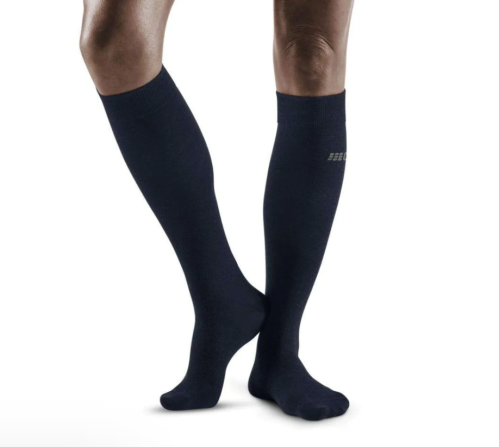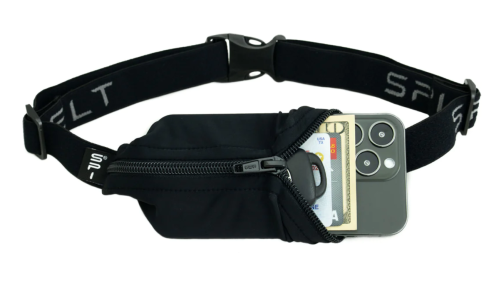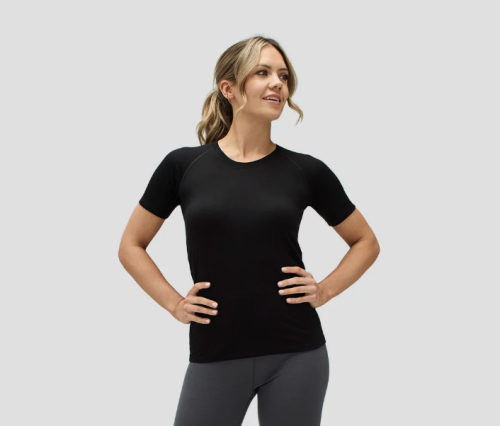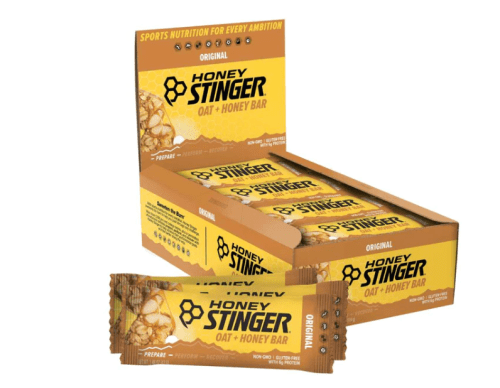Our editors independently select these products. Making a purchase through our links may earn Well+Good a commission
How To Plan a ‘Run-Cation’ So You Can Have Your Best Race *and* Enjoy the Trip, According to a 13-Time Marathoner and a Run Concierge
Looking for travel for a marathon tips? Check out these nine strategies to make it the best run-cation you can have.

I’d just turned off the Thames river when the iconic home of the British monarchy came into view: Buckingham Palace. My quads were burning, my tongue was hanging out of my mouth as I gasped for air, and Brits on either side of the course were yelling at the top of their lungs. With less than one mile left to one of the most-epic finish lines in marathoning, I booked it with everything I had left in my very dead legs.
Experts in This Article
I’d gotten the opportunity to run the London Marathon last month as a guest of The Westin London City, since Westin Hotels & Resorts is the new official partner hotel of the Abbott World Marathon Majors. Because it was my first chance to get out of the country in almost five years (thanks to grad school, a pandemic, and a baby), I decided to take advantage and bring along my husband and 10-month-old for a full-on, 10-day trip.
This wasn’t my first overseas racing rodeo. Back before life got in the way of our wanderlust, my husband and I used to run a couple out-of-town marathons or ultramarathons each year. We learned that traveling for a race can be a fantastic way to see a new place while doing something we love.
But planning a “run-cation,” as we nerdy runners sometimes call it, also requires some tricky logistics. Here are nine strategies that I’ve either picked up over the years or learned more recently from global RunWestin concierge Chris Heuisler.
1. Decide how important your race performance is to you
A ‘run-cation’ has two parts: the race, and the vacation. But how much emphasis gets put on each component can vary based on what you really care about.
“Know why you’re there and what you want out of the experience,” says Heuisler. Maybe you’re after a PR, or maybe you just want an excuse to travel. Maybe it’s something in between. Clarifying your priorities will help you make the best decisions about how to plan your trip—in particular, how seriously you’ll want to take the days leading up to the race.
2. Arrive early enough to adjust and avoid travel stress
Most people can’t fully relax into vacation mode until after their race is over, so you want to plan a run-cation so that the running happens near the start. Yet you also don’t want to cut it so tight that travel delays make you miss bib pickup, or the race altogether. (My husband and I once flew to Kansas City only to land after the race had already ended… Not ideal.) Also, if you’re heading to a new time zone, giving your body time to adjust can help you have a better race.
That’s why Heuisler—who’s currently on his own quest to run a marathon in all 50 states—suggests aiming to arrive 36 to 48 hours before the race. “I think what that does for me is I don’t feel as stressed,” he says. “I’m trying to account for airport delays, there could be problems getting into my hotel. I err on the side of caution if my schedule allows for it.”
3. Plan to be off your feet as much as you can before the race
If racing well is the primary goal of your trip, save your sightseeing until after you cross that finish line. Instead, get outside (“direct daylight is a much better way to kick jet lag than a nap,” points out Heuisler), pick up your bib, do a shakeout run, then just relax. Heuisler says the day before a marathon is actually his favorite day of training. “Ideally I’ll just kick my feet up and carbo load, watch some Netflix, some sports, and stretch and massage my legs so that I wake up feeling pretty fresh,” he says.
But if you’re most looking forward to exploring a new place, being stuck in your hotel room for a day or two until the race can feel super frustrating. Heuisler’s advice? Go out and see some sights, just take it easy. “If you’re hydrating, you’re taking care of yourself, I would encourage you to not overthink it,” he says. “Take the elevator, take the escalator and don’t feel bad about it.”
You can still be a tourist without overly-taxing your legs: Take a bus or boat tour, or go see a show or a sports game (with seats). In London, I spent the afternoon before the marathon taking advantage of The Westin London City’s spa, relaxing between the jacuzzi, the sauna, and the steam room—definitely something I can’t do at home, which made it feel like a solid vacation activity.
4. Control the controllable
Both in racing and in travel, there’s a lot that’s out of your hands. “It’s really easy for runners to be like, Oh my god, did you see the weather report?” says Heuisler. But no matter how many times you check the app, you can’t change what it says. What you can do is be prepared, and pack everything for each weather scenario predicted.
In the same vein, you can’t avoid traffic or travel delays, but you can give yourself enough time to get to the race so that you don’t have any anxiety that you’ll miss it. One of the best pieces of advice Heuisler gave me was, “Don’t get your heart rate up before the race.” Travel mishaps happen, so do what you need to arrive at your destination and the race itself without stressing out.
5. Chat up some local runners
The night after we landed in London, we went to an opening party for the new Tracksmith store. A couple friends from home in Boston (where the brand is based) were there, but the best part was talking with some of the London-based runners.
Getting to know locals is always one of the best parts of traveling, and when they’re runners—one of our kind!—it’s even more fun. We got some insights about the London run culture, and insider tips on the marathon course that would never be posted on a race website, like where to expect the crowds to thin out, and the best places for my husband to watch. Another local I met the next day at a shakeout run gave some top-notch neighborhood pub recommendations.
6. Err on the side of overpacking—but avoid checking a bag
If the weather forecast has been flip-flopping, do yourself a favor and pack for all scenarios. I had three possible tops to wear in London, TBH. “Just remember that if you’re overpacking for a marathon, it means you probably can’t buy much,” says Heuisler. That is—unless you’re also packing throwaways just to keep you warm on your way to the start line.
Heuisler starts his packing with what he needs for the race. “So I will not forget anything that I need for race day, no matter what,” he says. Next, he’ll think through what he needs for the day before the race (mainly, comfy sweats and socks). “And then after that, if I forgot anything else, I’ll live with it,” he says.
Personally, as a minimalist packer, I love anything that does double duty, like my Cep tall compression socks I can wear on the plane and after the race, or my Spibelt that I can stash my phone in while running and while touring the sights so I don’t have to lug around a purse. I also swear by merino wool tops so my suitcase doesn’t get stinky (since merino is naturally odor-resistant). For London, I put both a tee from Unbound Merino and my favorite long-sleeve, the Brighton base layer from Tracksmith, in my backpack since both can work for running and just hanging out.
This two-for-one strategy helps me keep things light enough that I only need a carry-on. If you do check a bag though, just be sure to keep any race essentials (like your shoes!) on the airplane with you just in case luggage gets lost.

Cep Allday Merino Tall Compression Socks — $45.00
These compression socks help my legs feel fresher faster—whether after a multi-hour plane flight or a multi-hour marathon.

Spibelt — $27.00
Since this running belt takes up so little room in a suitcase, even if I don’t end up using it, I’m not mad about packing it.

Unbound Merino T-Shirt — $85.00
Versatile enough to wear under a blazer for dinner out or throw on for a comfortable run, this simple black tee has become a go-to travel companion.

Tracksmith Brighton Base Layer — $88.00
My Brighton Base Layer pretty much always comes with me (unless I’m heading somewhere super hot). It’s equally soft and sturdy, warm and breathable.
7. If you have a picky stomach, pack familiar foods
Runners can be particular about what they eat leading up to a race. For years, the only breakfast I could have before a big race was a bagel and peanut butter—which I’ve carted with me to Istanbul and Havana. I’ve since grown a bit more flexible, but I still make sure my backpack has plenty of stomach-friendly snacks I can rely on, especially if I’m not sure what options I’m going to be able to find at my destination.
For London, I stocked up on Honey Stinger Oat + Honey bars, which I find easy on the GI tract, with a solid dose of carbs to fuel my miles, and just enough protein to fill me up without weighing me down. I snacked on one per day before the race, and also brought one to the start line along with a banana I’d grabbed from The Westin, which hands out snack packs on marathon day for both runners and supporters.

Honey Stinger Oat + Honey Bars (12 pack) — $33.00
I like the original and the chocolate chocolate chip flavors; just depends on my mood. Both sit well in my stomach before a hard run.
ThirdLove Just Launched Bras That Help Balance Your Body Temperature—Here’s Why That’s a Game-Changer for Women in All Life Stages

These Are the Only Types of Underwear You Should Be Wearing, According to Gynecologists

These Are the Summer Essentials You Should Bring With You Every Time You Leave the House, According to a Derm and an RD

8. Spend the day after on active recovery
After you’ve run your race, one of the best ways to help your body recover the next day is by going for a walk, and doing some of that sightseeing you might have been putting off.
It’s also worth treating yourself. “Scheduling a massage is one of the best rewards you can give yourself,” says Heuisler. “And I know it can be expensive and I know it’s premium, but remember you just spent probably 12 to 16 weeks preparing for a 26.2 mile race.”
This was actually the first time I got a post-race massage, and now I want it to be part of my marathon routine every time. (Having the massage right inside The Westin London City’s spa was especially luxurious since afterwards, I just stuck on slippers and hopped in the elevator right up to my room.)
At the very least, I plan to stay on top of my post-race self-care. The WestinWORKOUT Gear Lending kits include, among other things, a yoga mat and a Hypervolt Go 2 massage gun. Having these right in my hotel room got me to gently stretch out and massage my super-sore quads so my body didn’t totally stiffen up like the Tin Man.
9. Skip your runs for the rest of the week
As a runner, one of my favorite ways to see a new place is by running through it. I was even a running tour guide for a few years because I think it’s such a great way to travel! But after a long race like a marathon, give your body the break it needs to recover.
“I think a lot of people go back out too soon. And I really, really caution against that,” says Heuisler. Spend the rest of your trip on other ways to enjoy the destination—you can still walk or hike, bike or kayak. Or take cabs everywhere. You do you. Especially after a big race, you deserve it.
Sign up for the Well+Good SHOP Newsletter
Get exclusive deals on wellness, beauty, fitness, and food products that have been hand-picked by our editors.
Got it, you've been added to our email list.







